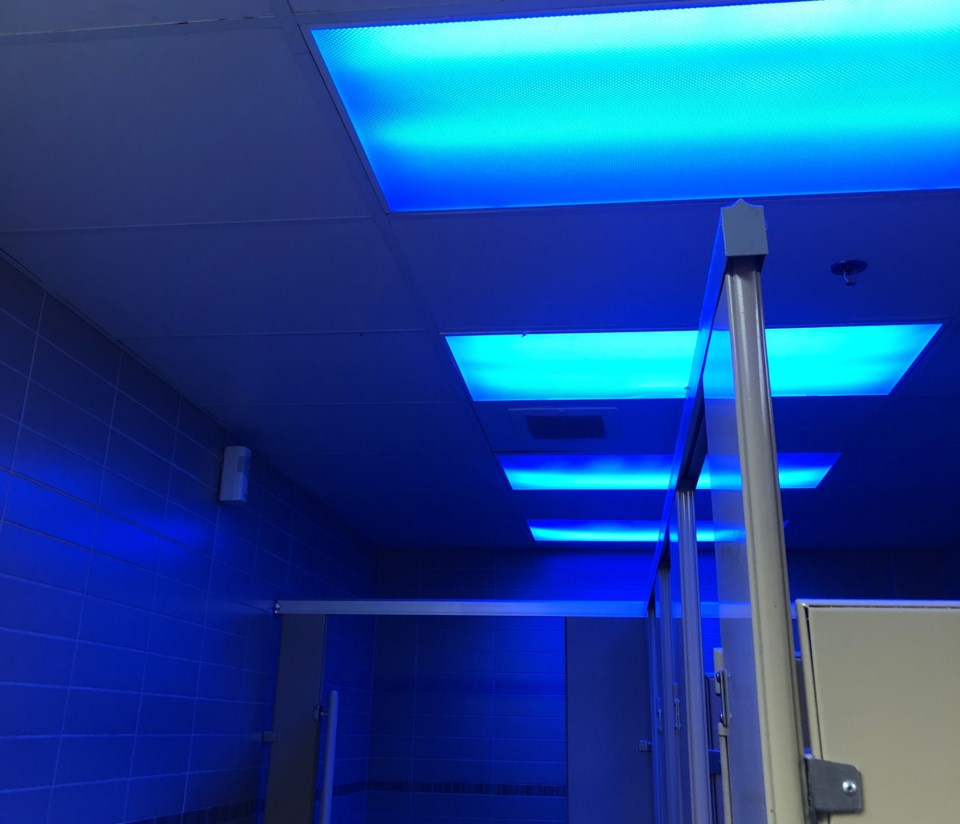Have you ever accessed a public washroom at a Vancouver business and noticed the lights were tinted blue or purple?
The special lights have been installed to dissuade drug use.
The reasoning behind the blue or purple-hued lighting is that it's harder to see superficial veins in these colours of light, explains The BC Centre for Disease Control (BCCDC) in a 2019 document.
"Blue lights are sometimes installed in public washrooms to discourage injecting drug use. The lights are intended to visually obscure superficial veins, thereby making it difficult to inject drugs intravenously," they state in the policy position paper.
Public restrooms, be they in private or public facilities (from parks to malls to large retail outlets) offer a private, indoor space that can be appealing for drug use. Using lights that make it difficult to use certain types of drugs is seen as a way to discourage that behaviour without impacting the washroom's intended use.
However, its effectiveness is not absolute and the BCCDC actually recommends against installing blue lights.
"While the lights reduce vein visibility, evidence indicates people will attempt to inject under blue lights when they feel confident in their injecting ability and where there are no suitable alternatives," they state in their position paper.
And because the lights reduce visibility, it can lead to riskier drug injection behaviours.
"They promote unsafe practices such as deep vein injecting, which can be done without visual identification of the vein. People attempting to inject under blue lights may accidentally inject into an artery or into surrounding tissue," they note. "They may have trouble measuring and monitoring the amount they are injecting, thereby increasing overdose risk. Poor visibility increases the risk of blood borne virus transmission as it is harder to see and clean up any blood or bodily fluids."
It might also mean someone would attempt to use drugs in other locations nearby, like staircases.
For people using the washroom for other uses, having tinted lights can also make it more unsafe, by making it difficult to see what they're doing or hazardous waste, and obscuring their own bodies which may make it difficult to spot an issue - like spotting blood or bleeding, or changes in bodily fluids.
A 2013 UBC study addresses people who had used or were using injection drugs in connection with blue-lit spaces. "The majority [of drug users] had attempted to inject in a blue-lit washroom. While there was general agreement that blue lights do make injecting more difficult, a small number of participants were entirely undeterred by them, and half would use a blue-lit washroom if they needed somewhere to inject urgently," the study notes.



